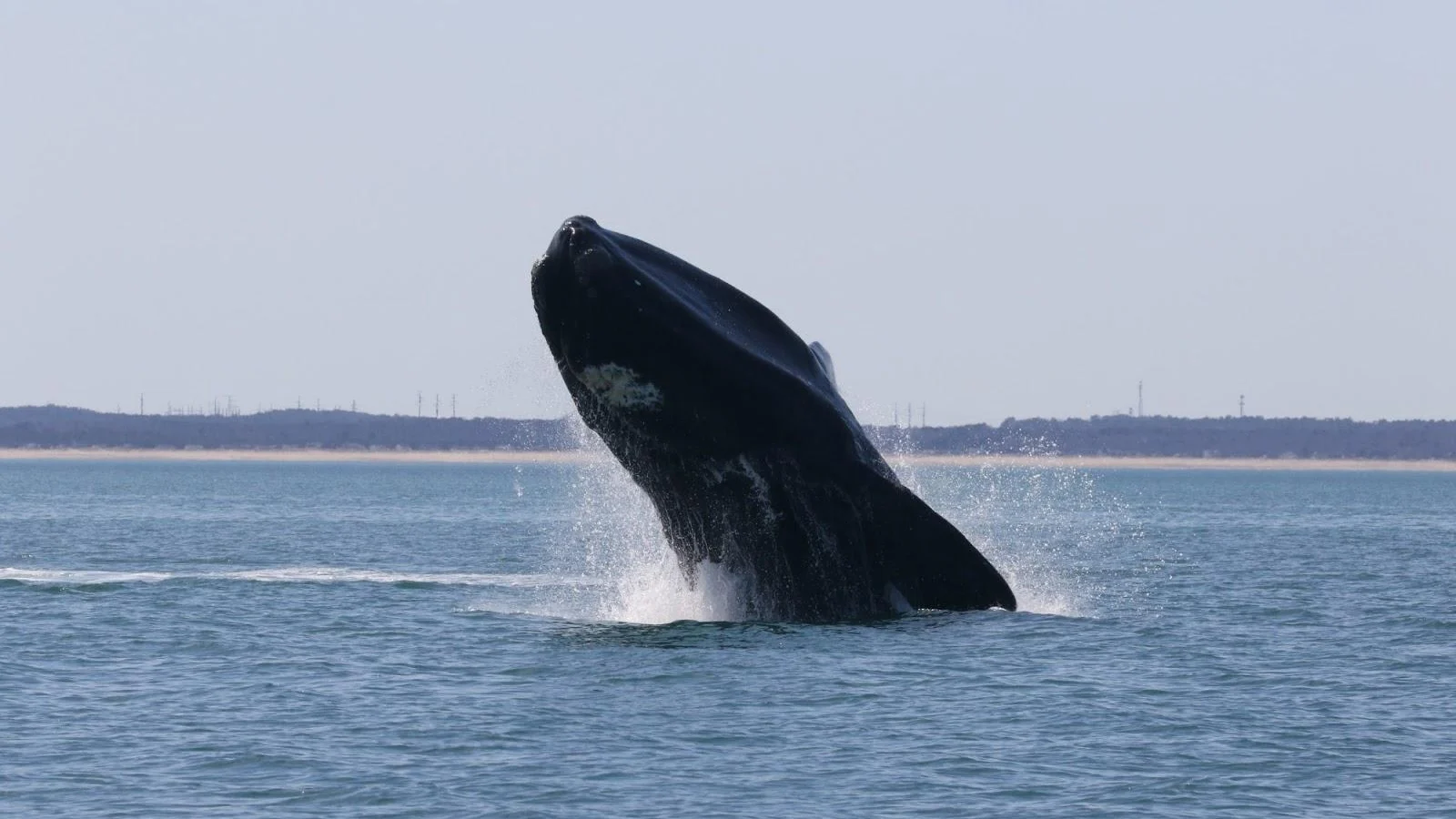
ROM exhibit reveals the wonders of great whales, but also the dangers they face
The 'Great Whales: Up Close and Personal' exhibit has opened at the Royal Ontario Museum, highlighting the biology and evolution of these magnificent ocean mammals, but also how climate change is impacting some of their populations.
A new exhibition at the Royal Ontario Museum launched this summer is delivering a clear and timely message: great whales are facing increasing dangers in Canadian waters due to climate change.
"Great Whales: Up Close and Personal promises to not only enthrall visitors with the awesome size and scale of these animals, but help people better understand their lives and the threats they face," Josh Basseches, Director and CEO of the Royal Ontario Museum, said in a press release. "We hope that together we can help shape a better future for these three species."
Walking into the exhibition at the ROM, you cannot help but feel a true sense of awe: three immense skeletons on display — a sperm whale, a blue whale, and a North Atlantic right whale — remind us just how large and majestic these marine animals really are. Yet, in such proximity to the skeletons comes the realization of the threats that these species face, either directly or indirectly, due to human activities.

The sperm whale (foreground, right) and the blue whale (background, left) at the Royal Ontario Museum’s Great Whales: Up Close and Personal exhibition. Credit: ROM
Visitors at the museum learn the three specimens that are part of the exhibition all died in the waters of the Gulf of St. Lawrence due to different reasons.
According to the ROM, the sperm whale was found in 2001, after the animal beached himself on a sandbar off the coast of Prince Edward Island. The female blue whale drowned — along with eight others — while trapped under thick ice in 2014. The North Atlantic right whale's death, however, is most directly attributed to climate change, which has forced these whales to follow their food into dangerous waters.
"Climate change has moved food resources further north, and the biggest challenge for Right Whales, is most of them are forced to feed in the Gulf of St. Lawrence, which as we all know, is an incredibly busy shipping area," says Mark Peck, Manager Schad Gallery of Biodiversity. "So, we have entanglements in fishing gear, we have ship strikes, and that accounts for over 85 per cent of the mortalities we know about right now."
Whale population numbers are telling and put the exhibits' important messaging into context.
There are around 360,000 sperm whales left in the world, according to the ROM, and fewer than 20,000 blue whales. As of 2020, though, there are less than 375 North Atlantic right whales, and only 1 in 5 is a female capable of reproducing. There is some good news, as the museum reports that 17 new calves have been counted so far in the 2021 mating season. This gives some hope for the species' recovery, but the right whale could be extinct within two decades if we do not change our ways.

This infographic shows the estimated population of North Atlantic right whales, from 1990 to 2019. Credit: NOAA
By the early 1890s, commercial whalers had hunted right whales in the Atlantic to the brink of extinction. And now, even though whaling is no longer a concern for them, human activities — commercial shipping, fishing, and climate change — still count among the biggest threats to this species.
"It is poignant that what brought these three whales together at the ROM is their individual tragic deaths. It is through getting to understand these whales better that we can start to learn how to save them," Dr. Mark Engstrom, the lead curator of Great Whales, said in the press release.
Despite the unfortunate ways these whales came to be part of it, the exhibition is rich with details about their evolution and biology. It highlights their beauty and magnificence, as well as their unique and fascinating adaptations to life in Earth's oceans. It also unveils their social and cultural behaviour, which underscores the great intelligence of these ocean mammals.
In addition, Great Whales: Up Close and Personal takes into account sustainable living best practices and the exhibit features Indigenous ways of knowing that will certainly help foster the preservation of these mighty species.

A North Atlantic right whale breaches the surface of the water in Cape Cod Bay, Massachusetts. Credit: NOAA Fisheries/Alison Ogilvie
Importantly, the fact to take away from this exhibit is how each of us as environmental stewards can play a role. This can be done even from an urban centre like Toronto, says Peck, through helping out organizations on the east coast, through buying sustainable seafood, minimizing plastic use, and preventing pesticides from reaching the oceans.
"So, there are little things that we can all do," says Peck. "And all we have to do is think how we can live our lives a little better, a little cleaner, and more sustainably. We can learn a lot from Indigenous communities and nations on how to do that."
The exhibition is open from July 16, 2021 to March 20, 2022, and includes digital content from the museum curators and scientists. Visit the ROM's YouTube channel, and check out the museum's Curator Conversations schedule for more details on this bonus content.











